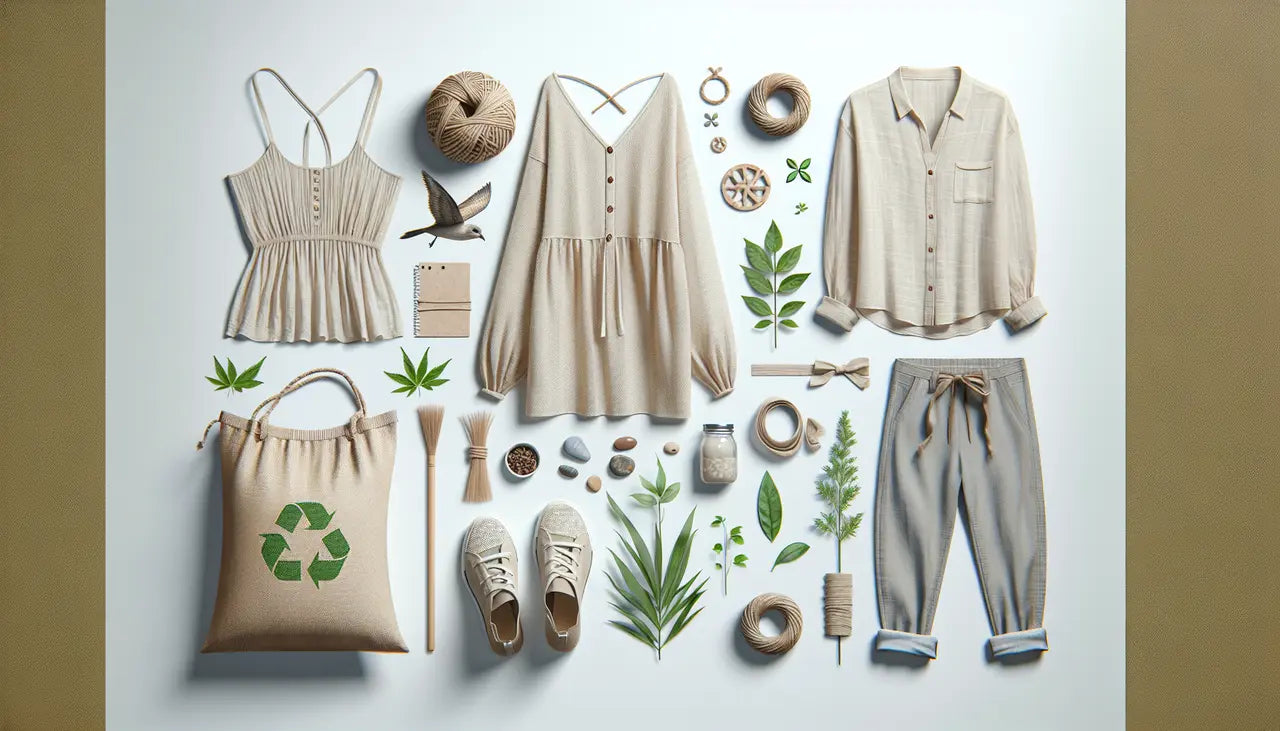
The Ultimate Guide to Biodegradable Clothing and Sustainable Style
Introduction to Biodegradable Clothing and Sustainable Fashion
Biodegradable clothing and sustainable fashion are not just buzzwords. They've become essential practices in an industry often criticized for its environmental impact. Simply put, biodegradable clothing is made from materials that can break down naturally and return to the earth without leaving harmful residues behind. Sustainable fashion is a broader term. It not only includes using biodegradable materials but also involves ethical labor practices, energy-efficient production, and a minimal carbon footprint. Together, these practices aim to reduce the fashion industry's strain on our planet. So, when you choose a biodegradable piece or support sustainable fashion, you're not just picking clothes; you're making a statement about the kind of world you want to live in.

What is Biodegradable Clothing?
Biodegradable clothing refers to garments made from materials that can naturally break down over time without harming the environment. Unlike synthetic fabrics like polyester or nylon, which can take hundreds of years to decompose and release toxic chemicals in the process, biodegradable fabrics come from natural sources. These include cotton, wool, silk, and bamboo. The idea behind biodegradable clothing is simple: wear it, love it, and when it's time to say goodbye, it returns to the earth without leaving a trace. This approach is a key part of sustainable style, ensuring that our fashion choices don't burden our planet.
The Importance of Sustainable Style in Today’s World
We're living on a planet that's dealing with a lot. From climate change to overflowing landfills, it's clear we need to make changes. Fast. Enter sustainable style. It's not just a trend; it's a necessity. Choosing clothes that are kind to the environment helps in reducing waste and pollution. Think about it: the fashion industry is one of the biggest polluters out there. By picking biodegradable and sustainable clothing, we're voting for a cleaner planet with our wallets. It's about wearing pieces that not only look good but also do good. And it's not as hard as you might think. More brands are turning green every day, offering options that are both stylish and gentle on the earth. So, by adopting sustainable style, you're not just choosing what's in vogue; you're taking a stand for the environment. It's a powerful way to help the earth, one outfit at a time.
How to Identify Biodegradable Clothing Materials
To spot biodegradable clothing materials, you need to know what they are made of. Materials like organic cotton, linen, silk, wool, and hemp are your friends. They come from natural sources and can break down easily back into the earth. Here's a simple tip: if the material comes from plants or animals and hasn't been messed with too much, it's likely biodegradable. Avoid synthetic fibers like polyester, nylon, and acrylic, as they're more like plastic and don't break down. When shopping, look for tags that list the material. If it says "100% organic cotton" or "pure linen," you're in the right ballpark. Another smart move is to check for certifications like GOTS (Global Organic Textile Standard) or OEKO-TEX, which tell you the item meets strict environmental and safety standards. Remember, biodegradable clothing also means taking care of it properly, so it lasts longer and breaks down easily when it's time to say goodbye.
The Benefits of Choosing Biodegradable Over Traditional Materials
Choosing biodegradable materials for your wardrobe isn't just good for the planet; it's a step towards a more sustainable lifestyle. Unlike traditional materials that take hundreds of years to break down in landfills, biodegradable fabrics can decompose naturally in a much shorter time. This means less pollution and a lighter ecological footprint. Additionally, most biodegradable fabrics are made from natural materials like organic cotton, hemp, and bamboo. These fabrics often require fewer pesticides and chemicals during production, leading to cleaner air, water, and soil. Plus, going for biodegradable options usually supports more ethical and sustainable farming practices. This isn't just about the environment; it's for your health too. Clothes made from natural fibers are generally more breathable, leading to more comfort and less skin irritation. So, by choosing biodegradable, you're investing in the planet, in better production practices, and in your own well-being.
Care and Maintenance Tips for Biodegradable Clothing
Caring for biodegradable clothing is simpler than you might think, but it's crucial for extending the life of your sustainable wardrobe. First off, always check the care label. It's your go-to guide. For washing, cold water is a friend to biodegradable fabrics. It's gentler and conserves energy. Speaking of gentle, opt for mild, eco-friendly detergents. Harsh chemicals aren't just bad for the environment; they can break down natural fibers faster. Now, drying. Air-drying is the best route. It reduces energy usage and wear on your clothes. If you're dealing with stains, spot-clean using natural, gentle solutions. Regular, gentle care not only helps your biodegradable clothes last longer but also supports the environment. Remember, less frequent washing saves water and keeps your clothes in top shape. Follow these simple steps to make the most of your sustainable fashion choices.
Popular Brands and Designers Leading the Way in Biodegradable Fashion
When it comes to biodegradable fashion, several brands and designers are carving out a space for sustainability in the fashion world. Leading the charge, Stella McCartney is a name that stands out. She's been a pioneer in using organic, environmentally friendly materials while creating high-end fashion pieces. Patagonia, another major player, is committed to ethical practices and sustainability. They offer a range of clothing made from recycled and organic materials and are known for their durable and eco-conscious outdoor gear. For those looking into more accessible options, H&M has launched its Conscious collection, utilizing organic cotton and recycled materials. This move by a fast-fashion giant shows a significant shift towards more sustainable practices industry-wide. Then there's Reformation, a brand that focuses on minimizing the environmental impact of their production processes and making it their mission to produce trendy, sustainable clothing. These brands are not just selling clothes; they're leading a movement towards a more sustainable future in fashion, showing that style and environmental responsibility can go hand in hand.
How Wearing Biodegradable Clothing Impacts the Environment
Wearing biodegradable clothing is like giving the Earth a high-five. Here’s the deal – every piece of clothing you wear has an impact on the environment, but biodegradable options keep that impact to a minimum. Why? Because they break down naturally without leaving harmful residues. Traditional clothing, especially those made from synthetic fibers like polyester or nylon, can take hundreds of years to decompose, hanging around in landfills and leaking chemicals into the soil and water. On the flip side, biodegradable clothing, made from natural materials like cotton, hemp, and silk, can decompose in a matter of months to a few years when properly managed, essentially returning to nature without causing much fuss.
Moreover, the process of making biodegradable clothing generally involves fewer toxic dyes and chemicals. This means less pollution going into the air and water during production. It's a win-win: cleaner production and cleaner decomposition. Choosing biodegradable clothing also encourages more sustainable farming and production practices, pushing the industry towards more eco-friendly materials and methods. So, when you opt for that biodegradable shirt, you're not just making a style statement; you're casting a vote for a healthier planet. It's a small change with a big impact, showing that fashion can be both stylish and kind to our Earth.
Incorporating Biodegradable Pieces into Your Wardrobe: A Starter Guide
Starting your journey into sustainable fashion doesn't mean you have to toss out your entire closet. The trick is to gradually blend in biodegradable pieces. Focus first on the essentials, those items you wear day in, day out. Think cotton tees, linen pants, or bamboo socks. These materials are kind to the planet, breaking down naturally over time without leaving harmful residues behind. When shopping, zero in on quality over quantity. A well-made hemp jacket might cost more upfront but think of it as an investment—it's durable and will stay out of the landfill longer.
Next time you need to refresh your wardrobe, do a bit of research. Look for brands committed to sustainable practices, those that are transparent about where and how their clothes are made. And remember, every small change counts. Swapping out a single synthetic piece for a biodegradable option can make a difference. So, start simple. Build from there. Sustainable style isn't about perfection; it's about making better choices, one piece at a time.
Moving Forward: The Future of Fashion and Sustainability
The fashion world is finally waking up to the need for sustainability. This turning point means we're seeing more brands adopting eco-friendly practices, focusing on creating clothing that's both stylish and kind to the planet. Biodegradable clothing marks a significant stride in this direction. These are garments designed to break down naturally, returning to the earth without leaving harmful residues behind. The future of fashion looks green, emphasizing materials like organic cotton, bamboo, and other natural fibers that can decompose in a compost setting. But it's not just about the materials. Sustainable fashion also means ethical production processes, fair wages for workers, and designing clothes intended to last longer, reducing the need for constant replacements. As consumers, we play a critical role in this evolution. By choosing brands that prioritize the planet, asking questions about where and how our clothes are made, and opting for quality over quantity, we can help steer the industry towards a more sustainable future. Remember, each purchase is a vote for the type of world we want to live in. Let's make it count.


